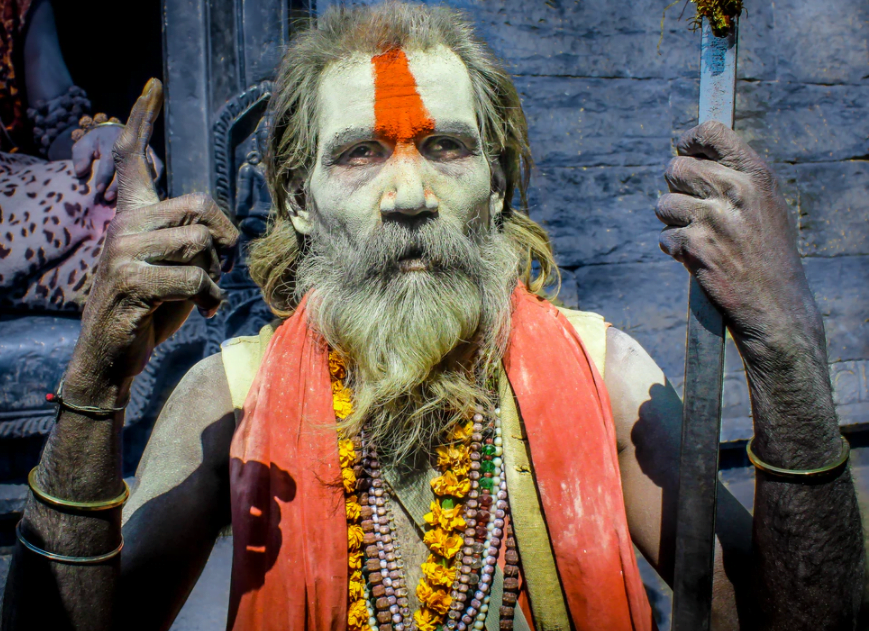Kumbh Mela is a world renowned holy carnival. It is witnessed by a large gathering of humanity from India as well as from all across the globe. Bathing in the Holy Rivers of India is the most significant ritual of this fair.
According to Hindu beliefs, taking a bath in the holy water during some important auspicious dates can swipe away ill effects of deeds. This imparts significance to Kumbh Mela. Last time, the event occurred in Prayagraj. Upcoming Kumbha Mela 2025 is going to be conducted in Prayagraj.
Quick Navigation
About Haridwar Kumbh Mela
Kumbh Mela or Kumbh fair is a celebration of Hinduism that mixes education, learning of new skills, and entertainment. Right from childhood, many stories of Kumbh Mela are shared by every Hindu in their family. This fair is a centre of attraction to every Hindu and each time the fair breaks its record of gathering.
To attend this event, the Tourism Ministry and Railway Ministry makes many arrangements. The bookings for Kumbh Mela starts before a few months for participants convenience. Many important events and cultures are related to the fair. So, here is the list of things that you should know about Kumbha mela.
Upcoming Kumbh Mela
The last Kumbh Mela will took place in Haridwar in 2021. It is estimated that it will be witnessed by more than 150 million people across the globe. Haridwar is a pilgrimage site surrounded by river Ganga.
Haridwar Kumbh Mela Dates
Haridwar Kumbh Mela dates have been trimmed down to one month. The dates are from April 1st to April 30th, 2021.
Haridwar Kumbh Mela 2021 Update
For the first time in its history, officials decided to cut down the Haridwar Kumbh Mela to only one month.
Devotees participating in Mela should bring RT-PCR Negative Certificate mandatorily, as per Uttarakhand High Court orders.
Normally, Haridwar Kumbh Mela happens three months long; however, due to the pandemic conditions, officials released this note about trimming down the celebrations to one month.
In 2010, the Haridwar mela happened from January 14th to April 28th.
Kumbh Mela usually will start on Makar Sankranti, 14th January 2021 with Snan. After that, Shahi Snan will occur on Maha Shivratri which will occur on 11th March 2021. It will be concluded on Chaitra Purnima, 27th April 2021 with Shahi Snan.
Also Read: Angkor Wat Temple – The Eight Wonder of the World
History of Kumbh Mela
“Kumbh Mela” word is made up of two Hindi words. Kumbha means a pot and Mela is fair or carnival. Many chronicles that depict a relationship between Kumbha Mela and bathing rituals are present in Rigveda Parisista.
The exact origin of this mela is still not certain. A Buddhist Chinese traveller, Xuanzang mentioned for the first time about Kumbh Mela and the holy water bathing.
Due to its immense religious prominence and the amassing number of people attending it, Kumbha Mela has been added as the Intangible Cultural Heritage festival by UNESCO in the year 2017.
Mythological importance
There are mythological aspects of Kumbha fair. It is mentioned in Hinduism that the idea of Kumbha Mela originated from Samudra Mathan. “Samudra Mathan” means to churn the sea.
Sanskrit scholars claim that there are numerous proofs and elaborations of a relation between Kumbh Mela and many ancient works of literature. The rituals of worshipping and bathing at Prayagraj are also documented in the Mahabharata. It is a belief since ancient times that the holy water bathing will lead to victory and a means of atonement.
According to Hindu mythology, Amruth Bhandh, a pot of immortality, originated after Samudra Manthan. The Samudra Manthan was done due to a fight between Gods and Demons over a pot of immortality. Finally, the pot was won by Gods and it is mentioned in ancient works that this pot was split over four locations. These four locations are Prayagraj(Allahabad), Haridwar, Nashik and Ujjain. These places are the holy spots for four Kumbha Melas.
No records are available for the exact phrase Kumbha Mela or Kumbha fair in early Hindu literature. But there are various narratives related to bathing fairs or bathing festivals. It was a belief that the holy river bathing like in Ganga and Yamuna might lead to victory as well as an escape from the cycle of birth and death.
Prayag Kumbh Mela
Prayag Triveni Sangam is a place which is a merging point of three major holy rivers. It is the home of Prayag Kumbh Mela, Maha Kumbha or Kumbha Mela.
- Prayag Kumbha Mela held in 2019 was an Ardha Kumbha Mela, which means it takes place every six years.
- Next Ardh Kumbha Mela 2021 will take place in Haridwar.
Kumbh Mela tickets
Last Kumbha Mela was held in the year 2019. The Government of India was helping people of India for Kumbha Mela tickets by giving special offers on the pricing. The aim was to help visitors from all over the world to enjoy a railway journey.
In 2019, rates for Kumbha Mela tickets were started from Rs 5. A banner was released by Prime Minister of India, Mr Narendra Modi in which he revealed fare for Kumbha Mela tickets.
Kumbh Mela booking
As it is already known that a large crowd gathers for Kumbha Mela, it is very essential for making Kumbh Mela booking beforehand. Many travel companies tend to start Kumbha Mela booking 6-12 months before due to a large number of people.
Kumbha Mela starts from the day of Makarsankranti which comes in January. Upcoming Kumbh Mela will be organized in Haridwar and its booking has already been started.
Upcoming Kumbha Mela 2021 booking includes booking of accommodation, food facility, pick, and drop facility along with guides. You can visit the website https://www.haridwarkumbhmela2021.com/ for further details about Kumbh Mela 2021.
It is better to make Booking as soon as possible for grabbing maximum discounts. Online booking and offline booking are available for visitors from all over the world. Online Kumbh Mela booking is as well provided with currency converters. There is a special package called Kumbh Mela Tour package. IT includes transportation, luxury vans which are attached to the bath and serve vegetarian Indian Cuisine.
Special planning is needed to be done for the upcoming Kumbh Mela due to the present scenario of COVID 19. You need to check the COVID restrictions based on your country and also in this website.
Relationship between saints and Kumbh Mela
One of the main attractions at Kumbh Mela are Naga sadhus or saints. Naga saints do not wear any clothes and their bodies are covered with ashes. They are the devotees of Lord Shiva.
Kumbha Mela starts officially after Naga saints bathe in the holy river. Normal people can as well interact with them to share and solve their problems by taking spiritual advice from them.
Presence of Akharas
Kumbha Mela is attended by Akharas too. Akharas are the group of saints with weapons. This is a group formed by Sri Adi Shankara to protect the saints.
Initially, there were four types of Akharas in total but due to differences in their thinking, they were again divided into thirteen categories.
Many competitions are organized in Kumbha Mela in which they present their talent and courage. Along with these, Akharas are as well a source of education to common people.
Kumbh Mela Bath
It consists of many rituals and the most important among them is a bathing ritual. During this event, a large gathering of millions of visitors from all over the world take part in the bathing ritual. It is believed that the holy water bathing during Kumbha Mela washes away all sins and bad deeds and leads to Moksha attainment. Saints along with common people perform worship on the banks of holy rivers.
- Prayagraj Kumbha Mela starts on Makar Sankranti with bathing.
- Shahi Snan or Rajyogi Snan is done by saints and various groups of Akharas on Maha Shivratri.
- After Shahi Snan, common people are allowed to take bath as it is believed in Hinduism that bathing after Shahi Snan increases the advantages.
Types of Kumbh Mela
Kumbh Mela is as well known as Kumbha fair. There are three kinds of Kumbh Mela.
- The first one is Half Kumbha Mela which takes place every 6 years. Half Kumbha Mela is known as an Ardh Kumbha Mela.
- The second one is full Kumbha Mela and it takes place every 12 years. The full Kumbha Mela is as well-known as Purna Kumbha Mela.
- The third one is Maha Kumbha which takes place after every 144 years. Maha Kumbha Mela is supposed to be the biggest of all Kumbha fairs.
The first Maha Kumbha Mela was estimated to be held in Prajyagraj according to much ancient literature. Maha Kumbha Mela is held after the completion of 12 Purna Kumbha Mela.
So, it is very much evident that a person with an average life can’t witness two Maha Kumbha Mela in his lifetime.
Impact of Kumbha Mela
There are many religious impacts of Kumbha Mela on Hindus across the globe. Day by day, people are distancing themselves from their cultures and traditions so it is the best way to rejuvenate themselves.
This beautiful holy festival and gathering of Hindus has an impact on family relations. Besides, it also provides adventure and education. One can witness saints, Naga saints and Akharas who appeal to common people with their mysticism and spiritual wealth.
Source of employment for many people
There is a great impact of the Kumbha fair on employment as well. As it is already known that Kumbha Mela is the world’s largest gathering therefore it emerged to be an economic blessing as well.
Travel and hospitality sectors get benefitted by it due to the involvement of a large number of people to travel from their location to the location of Kumbha fair.
Locals or people from nearby places can come to sell their commodities at a good price as Kumbh Mela is visited by many foreigners as well.
According to reports, the Kumbha fair in 2019 was witnessed by more than 120 Million people and due to this reason, approximately more than 6,00,000 employment options were generated.
Important rituals and events
It has many important rituals which are performed by saints as well as by common people. It is initiated with Shahi Snan (Royal bath) on the day of Makar Sankranti and after that common people perform the holy water bath ritual.
People reside at the location of Kumbha Mela for an entire month and this duration of staying can be termed as “Kalpvas”.
Another ritual is that the saints arrive at the location of Kumbha Mela on chariots driven by horses or elephants. Then comes the Aarti ritual.
Aarti ritual is performed on the banks of the holy river with lamps, diyas, hymns and prayers. It is the main centre of attraction and it is attended by thousands of people from all over the Earth.
It ends on Chaitra Purnima with Shahi Snan.
Related: Why India is called Incredible India?
Related: Why Indians draw Rangoli? Science behind Rangoli
Related: Why Mango is the National Fruit of India?
Related: Why Onam festival is celebrated?
Related: Science behind Ugadi festival
Related: Science behind Dasara festival

